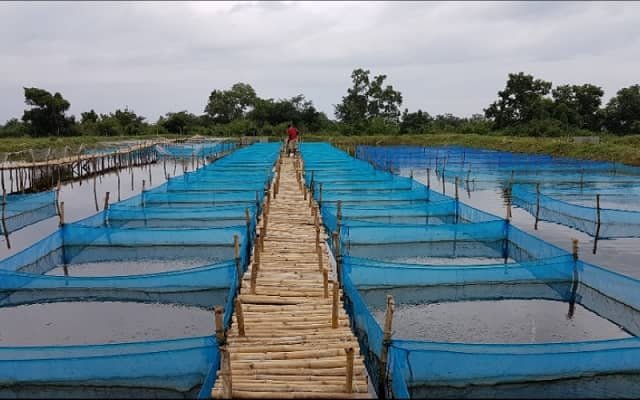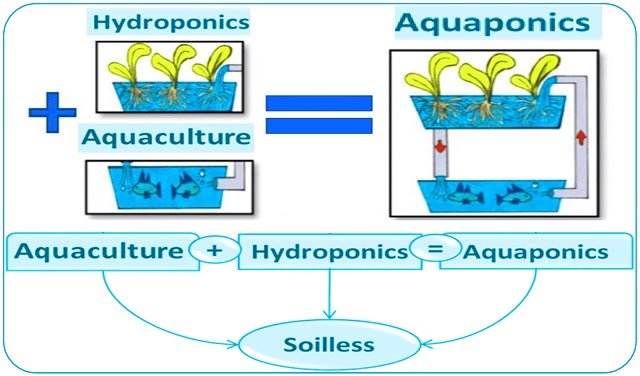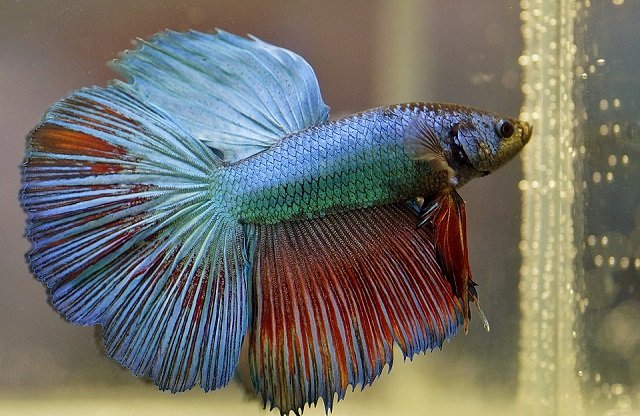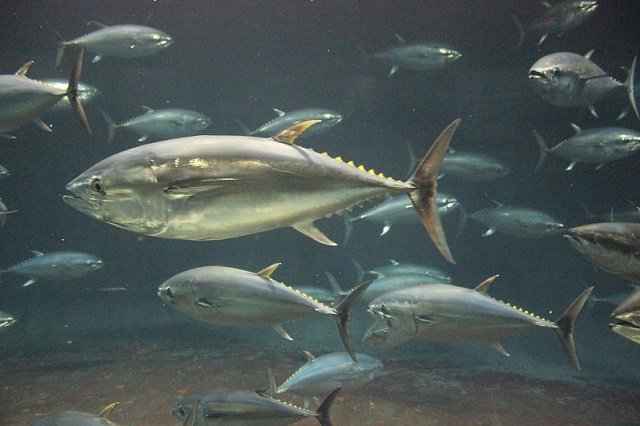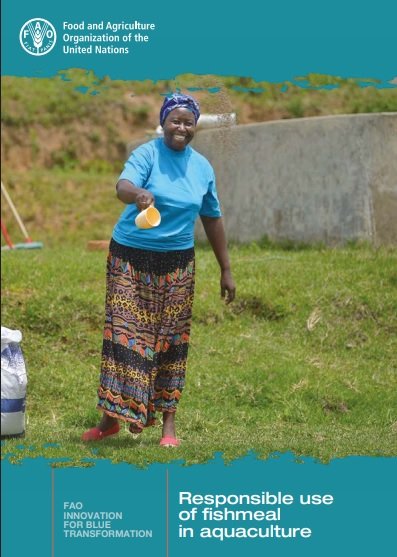
Global aquaculture has experienced exponential growth in recent decades, establishing itself as a fundamental pillar for global food security. For years, one question has loomed over the sector: does this growth imply unsustainable pressure on pelagic fish fisheries to produce fishmeal and fish oil? A recent document from the Food and Agriculture Organization of the United Nations (FAO) titled “Responsible use of fishmeal in aquaculture” offers a clear and, for some, surprising answer: the growth of aquaculture is not driving an increase in the demand for fishmeal.
Thanks to scientific and technological innovation, the aquaculture sector is not only optimizing but also significantly reducing the use of this traditional ingredient. This article breaks down the key findings of this report, exploring how the industry is adapting and what the future holds for aquaculture nutrition.
The growth paradox: More aquaculture, less fishmeal
- 1 The growth paradox: More aquaculture, less fishmeal
- 2 The shift towards circularity: The rise of by-products
- 3 Key strategies for responsible and reduced use
- 4 The search for alternative ingredients
- 5 Success story: The transformation of the shrimp sector in Ecuador
- 6 Challenges and the look towards the future
- 7 Entradas relacionadas:
The figures are compelling. While the aquaculture production of aquatic animals soared from 4.7 million tons in 1980 to 94.4 million in 2022, the volume of capture fisheries destined for the production of fishmeal and fish oil has decreased. It peaked at 30.1 million tons in 1994 and had dropped to 17.2 million tons by 2022.
This decoupling between the sector’s growth and the consumption of fishmeal is not a coincidence. It is a response to factors such as variations in the supply and price of fishmeal, competition with other sectors, and an increasingly critical public perception of its use. As a result, the proportion of fishmeal in aquafeeds has fallen sharply, from 19% in 2000 to just 9% in 2020.
The shift towards circularity: The rise of by-products
One of the most significant transformations is the origin of fishmeal itself. Traditionally, it was obtained from the fishing of small pelagic fish caught for this purpose. However, today, an ever-increasing portion comes from by-products (trimmings, viscera, and bones) derived from the processing of fish for human consumption, from both fisheries and aquaculture itself.
The proportion of fishmeal obtained from by-products has increased from 25% in 2010 to an estimated 34% in 2022. This trend, which is expected to continue, is a clear step towards a circular economy within the sector, where the value of each resource is maximized and waste is minimized.
Key strategies for responsible and reduced use
The FAO report identifies four fundamental strategies that the aquaculture sector is implementing to reduce its dependence on fishmeal.
Selective and strategic use
Instead of being used universally, fishmeal is selectively included in the most critical stages: in the initial larval development phases and for the nutrition of broodstock, where its nutritional profile is most beneficial. During the grow-out phase, which is the longest, its inclusion is drastically reduced or eliminated entirely.
Stay Always Informed
Join our communities to instantly receive the most important news, reports, and analysis from the aquaculture industry.
Improvement in feed efficiency
Technological advances in feed formulation and processing have made it possible to dramatically improve the feed conversion ratio (FCR). In the last 45 years, the typical FCR for various aquaculture species has improved, moving from a range of 1.8-3.0 to one of 1.2-1.8. This means less feed is needed to produce the same amount of fish.
Promotion of low-trophic level aquaculture
The FAO actively promotes the production of species that do not require formulated feed or that have low requirements, such as filter-feeding fish (carp), seaweed, and bivalve mollusks. These species not only reduce the demand for fishmeal but can also provide valuable ecosystem services.
The search for alternative ingredients
The industry has invested massively in the research and development of ingredients that can replace fishmeal without compromising the health and performance of the animals.
The universe of alternative ingredients: What options exist?
Replacing fishmeal is a complex challenge due to its high nutritional value, digestibility, and palatability. However, science has opened up a range of possibilities, often combining various sources to achieve a balanced nutritional profile.
- Terrestrial animal by-products: Ingredients such as poultry by-product meal, meat and bone meal, or blood meal are viable alternatives, although they sometimes present challenges in digestibility and require supplementation with essential amino acids.
- Plant-based ingredients: These are the most popular alternative. Soybean meal is the most widely used due to its availability and good nutritional profile. Rapeseed concentrates, sunflower, or corn gluten are also used. Their main challenge is the presence of anti-nutritional factors (ANFs), which can reduce nutrient absorption but can be overcome with proper processing and the use of additives like enzymes.
- Unconventional and novel ingredients: This is the most innovative field. It includes bacteria, biofloc, insects (like the black soldier fly), yeasts, microalgae, and single-cell proteins.
Success story: The transformation of the shrimp sector in Ecuador
Ecuador, one of the world leaders in shrimp production, is a practical example of this transition. The sector has managed to drastically reduce the use of fishmeal in grow-out diets to levels below 5%.
How have they achieved this?
- Advanced formulation: Their feeds are based mostly on plant-based ingredients (>75%), with soybean meal as the main pillar, supplemented with amino acids and other functional additives to compensate for any deficiencies.
- Feeding technology: They have moved from manual feeding to automatic systems and even to acoustic feeders that dispense feed in real-time according to the shrimp’s activity. This optimizes growth, reduces feed waste, and improves the FCR.
Challenges and the look towards the future
Despite the progress, the path is not without challenges. Finding alternative ingredients that are affordable, nutritionally complete, palatable, and have a constant and reliable supply is a complex task. Furthermore, it is crucial to assess the environmental and social impact of these new ingredients.
The case of West Africa, where the production of fishmeal from species key to local human consumption has generated social concern, underscores the need for responsible and traceable management of the entire supply chain.
In conclusion, the FAO report paints an optimistic and dynamic picture. Modern aquaculture is demonstrating an incredible capacity for innovation to grow more sustainably. The future of aquaculture nutrition will not depend on a single ingredient, but on an intelligent formulation that combines by-products, plant proteins, and novel ingredients. Improving the traceability of all raw materials will be fundamental to ensuring that the sector not only feeds the world but does so in a truly responsible manner.
Reference (open access)
FAO. 2025. Responsible use of fishmeal in aquaculture. FAO Innovation for Blue Transformation. Rome. 22 p.
Editor at the digital magazine AquaHoy. He holds a degree in Aquaculture Biology from the National University of Santa (UNS) and a Master’s degree in Science and Innovation Management from the Polytechnic University of Valencia, with postgraduate diplomas in Business Innovation and Innovation Management. He possesses extensive experience in the aquaculture and fisheries sector, having led the Fisheries Innovation Unit of the National Program for Innovation in Fisheries and Aquaculture (PNIPA). He has served as a senior consultant in technology watch, an innovation project formulator and advisor, and a lecturer at UNS. He is a member of the Peruvian College of Biologists and was recognized by the World Aquaculture Society (WAS) in 2016 for his contribution to aquaculture.
